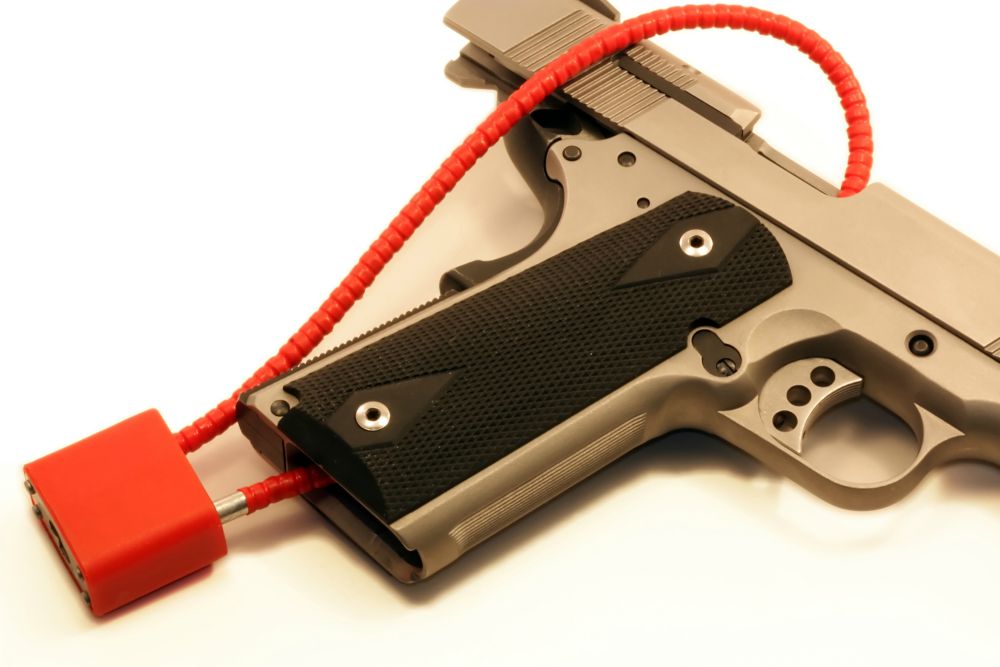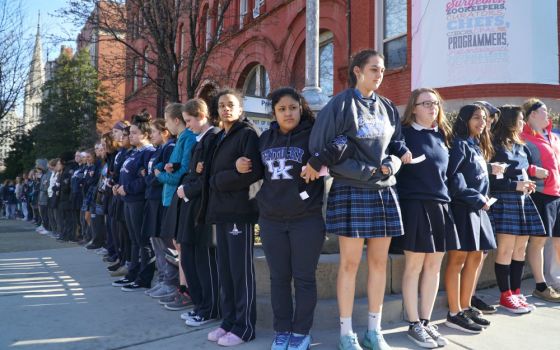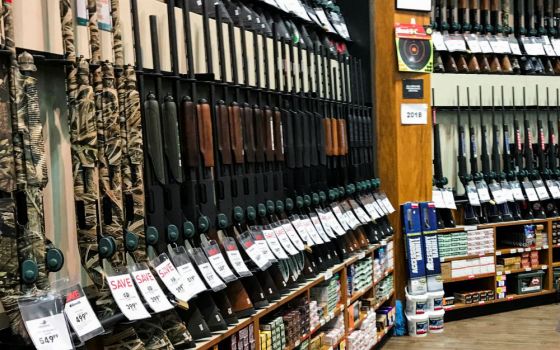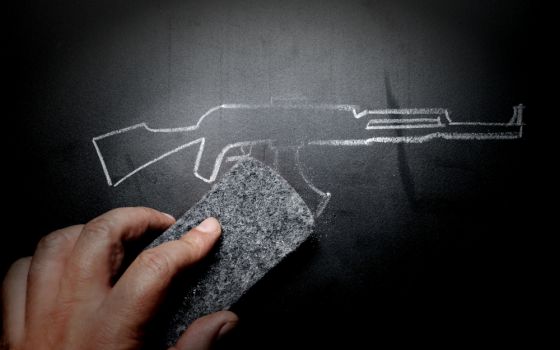
(Dreamstime/Kbiros)
The white, middle-aged man clad in hunter green trousers and polo shirt looks straight into the camera and recounts the dire facts: 86 percent of firearm deaths in Utah are suicides. Last year alone, 562 Utahans took their life. That total doesn't include attempts, he says, but the death rate goes "way up" when a firearm is used. More than half of Utah suicides involve a firearm.
No, the speaker is not an impassioned advocate of gun control. He's Clark Aposhian, chair of the Utah Sports Shooting Council, the state's most powerful pro-gun group, and a firearms instructor teaching the suicide prevention module included in Utah's required one-day training for a conceal-and-carry permit.
Cathy Barber, director of the Means Matter Campaign at Harvard University's T.H. Chan School of Public Health, teamed up with Utah firearm instructors to create the module. That unusual collaboration marks a small, but significant development in the field of public health and gun violence in the United States.
Every year, approximately 22,000 Americans kill themselves using firearms, according to latest data from the Centers for Disease Control and Prevention. That tally accounts for 61 percent of all gun deaths nationally; although that percentage differs vastly along color lines, says Barber. Firearm suicide is overwhelmingly a white health crisis. Among whites, 84 percent of all gun deaths are suicides; among blacks, 83 percent of those deaths are homicides.
While most suicide prevention programs focus on why people take their lives, researchers at Harvard have been looking at the data on who, when, and how. When it comes to suicide preventions, means and timing matter, they discovered.

Cathy Barber, MPA, director of the Means Matter Campaign at the Harvard School of Public Health’s Injury Control Research Center
In a June 16, 2016, article for The American Journal of Medicine entitled "How Physicians Can Reduce Suicide — Without Changing Anyone's Mental Health," Barber and fellow Harvard researchers David Hemenway and Matthew Miller note that "more than a dozen case-control studies in the US have consistently found that a gun in a home is a major risk factor for completed suicide." This is not because gun-owners, or their family members, are more mentally unstable than non-gun owners. Rather, gun-owners who contemplate suicide have quick access to the most lethal means. The fatality rate for self-harm with a gun is about 85 percent, with pills and cutting — the most common other methods — it is about 2 percent.
Studies have shown that most suicide attempts are transitory, and that very few survivors go on to kill themselves later. In their article, Barber and her co-authors cite a hospital survey of suicide survivors in which 48 percent reported they first contemplated killing themselves 10 minutes or less before attempting to do so. "For this group, especially, the lethality of the method readily at hand plays an important role," the authors write.
To Barber and her colleagues, the data indicated that putting time and distance between a suicidal person and a gun can save a life. And this is the message Aposhian delivers in his instructional video, along with how-to tips if the person in distress is oneself, a loved one, or a neighbor.
"Gun owning families can bring down the rate of firearm suicides," he says, "and we can do it without government mandate."
Barber designed the suicide prevention module two years ago with input from Utah's Suicide Prevention Coalition Firearms Committee. Barber found that many Utah firearm instructors were more than willing to communicate its public health message. After briefly piloting the lesson plan, she sent an email of inquiry to the state's 2,000 instructors of the conceal-and-carry curriculum, and 1,000 replied, she said. "We showed them the draft of the module and asked, 'Would you be interested in teaching it?' Two thirds said, 'yes.' That indicated great openness."
Gun lobbyist Aposhian is one of the module's staunchest advocates. He pushed for it to become a mandatory component of the conceal-and-carry curriculum rather than voluntary, which Barber initially suggested. Aposhian has since designed his own suicide prevention public service announcement for the Utah coalition. The 30-second video clip shows a white man in his 60s, interrupting his target practice at a shooting range to tell of a time when he was "feeling pretty low." Friends stopped by the house and offered to store his guns. "I think they saved my life," he says.
"It was perfect," says Barber, "because it hit every positive message of resilience which you need in suicide prevention and was wrapped in a gun-friendly message."
For Barber and Hemenway, the goal is to change social norms in order to reduce firearm deaths.
"We are going to have the guns: That's the state of affairs," Hemenway says. Within that context, public health personnel focus on harm reduction and prevention. This entails "doing things way upstream," looking at the behavior of populations instead of individuals and engaging everybody in an approach that emphasizes shared responsibility rather than blame, he explains. "It means asking, 'What can gun manufacturers, gun owners, firearm instructors, clergy, reporters, government and researchers do to reduce firearm deaths?"
Hemenway envisions a time when the suicide prevention module and its message become the "11th commandment" of gun safety and "babysitting" the guns of a distressed friend, or loved one, is as common a practice among gun-owning communities as "friends don't let friends drive drunk."
"How did we get to 'friends don't let friends drive drunk'? It was through a lot of people saying that in a lot of different venues. We need the same kind of approach with firearm suicide prevention. It has to come up at spaghetti dinners, sports clubs, in gun shops," Barber says. Like Hemenway, she too foresees a time when suicide prevention is a part of every gun training nationwide. She thinks it can happen in five or 10 years, as long as gun stakeholders are approached as part of the solution and not part of the problem.
"Gun owning families can bring down the rate of firearm suicides, and we can do it without government mandate."
— Clark Aposhian, Utah Sports Shooting Council chair
— Clark Aposhian, Utah Sports Shooting Council chair" target="_blank">Tweet this
Advertisement
Gun owners are receptive to this message, because they "they have skin in the game," Barber says. "They are more likely to know a friend or loved one who has committed suicide with a gun, and their values — responsible firearm handling, protecting family, neighbor helping neighbor — dovetail nicely with what is needed for suicide prevention."
Some evidence supports the researchers' optimism. Utah's Suicide Prevention Coalition is modeled after one in New Hampshire, the state that in 2009 was the first state to bring together gun advocates and public health workers to work on prevention of firearm suicide. Today, there are 20 such coalitions in states and counties across the country.
[Claire Schaeffer-Duffy, a freelance writer, lives and works at the Sts. Francis and Therese Catholic Worker Community in Worcester, Massachusetts.
Editor's note: This article was funded in part by a generous gift from Tom Bertelsen as a means to support the search for a solution to gun violence in our culture.








